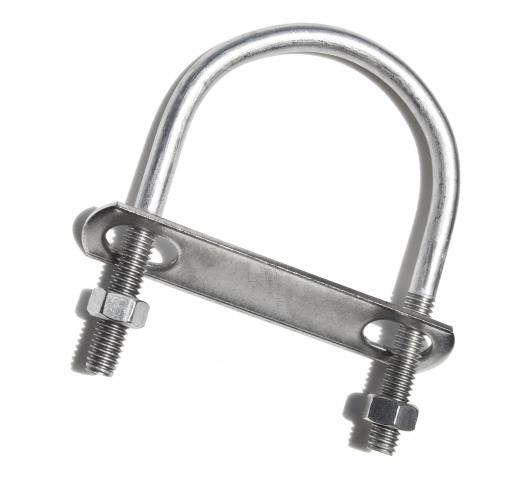A cable clamp is used to secure a wire, or cable, in place. These clamps are commonly used when holding, bundling, or transporting cords, wires, and other similar items. Cable clamps are used on all types of wiring and cable, ranging from very small diameter consumer electronics and telephone wires, to large diameter, heavy-duty electrical wiring, rope, and metal cables.
Cable clamps are used in home construction, the automotive industry, consumer product manufacturing, rigging, and many industrial applications. There are a wide variety of types and sizes of clamps available. A cable clamp can be purchased in steel, stainless steel, and many durable plastics. Use of a cable clamp eliminates the need to use adhesive tapes, cable ties, and hook and loop products like VELCRO®, which are not permanent and can have several shortcomings, like the sticky residue left by tape.

One common type of cable clamp used in general-purpose applications consists of a split circular opening that allows the user to spread the clamp around a wire or cable, and an extension flange with holes for a nail or screw to secure the clamp to a surface. This type of clamp is available in steel, stainless steel, and plastic, and usually has a cushioned jacket to protect the wire. The plastic clamp is the most economical, but has limited holding strength. For heavy-duty applications that require more holding strength and durability, a metal cable clamp should be used.
Another common type of cable clamp is known as a U-bolt clamp. These are also called cable stops and are used for rigging applications, rather than for securing electrical wiring. The clamp consists of a U-shaped bolt with threaded ends, a clamp plate with two holes for the U-bolt to pass through, and two nuts. To use this clamp, two ropes are normally placed inside the U-shaped bolt, the clamp plate is installed, and both nuts are tightened to secure the ropes together and prevent slippage. In applications where high tension, or force, will be applied to the cable, multiple clamps are typically used to provide additional protection against slippage.
Cable clamps come with many different features, like adhesive backing for mounting the clamps onto a surface, an assortment of colors, and even custom labeling. A reusable cable clamp is available, and is usually designed with quick-release features for easy engagement and opening by hand. Some clamp designs allow the gripping force to be increased or decreased so that the clamp does not over cinch, and cause damage to sensitive cables and wires, such as fiber optic lines.
